



“Do not compare this game with the Arkham series,” I told myself when I loaded up the game for the first time and I am now repeating it to myself as I write these words. Here, I should add, I’m referring to the mainline Batman: Arkham titles (Asylum, City, Origins, and Knight) that were released between 2009 and 2015, and not the spin-off mobile and VR titles.
Instead, I’ve been telling myself, that it’s probably better to draw comparisons with Crystal Dynamics’ Marvel’s Avengers (2020), which is based on a somewhat similar premise -- games as a service or live-service games.
And while the widely-criticised move by Rocksteady Studios to go from developing marvelous single-player titles to live-service ones still rankles, it’s best to put all that aside for now as we dive into 'Suicide Squad: Kill the Justice League', and judge it for what it is.
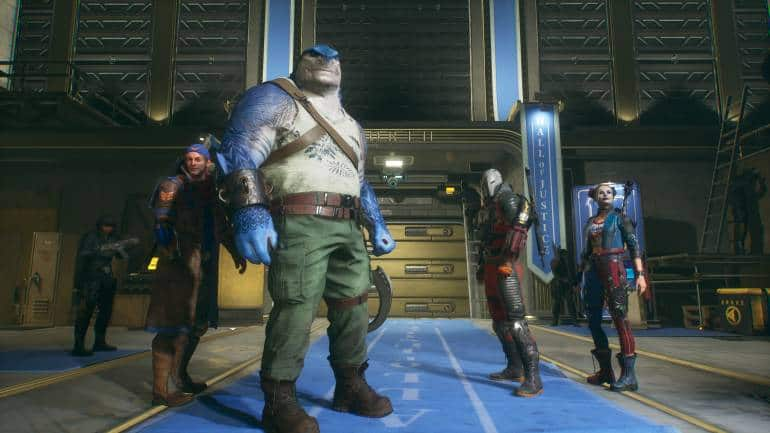 (Screengrab taken on PlayStation 5)
(Screengrab taken on PlayStation 5)
First impressions
The proposition is simple enough: Brainiac has corrupted the minds of the Justice League and is controlling them to effect his takeover of Earth and its counterparts in various parallel universes. As such, Task Force X — also known as the Suicide Squad and comprising Deadshot, King Shark, Captain Boomerang and Harley Quinn — is assembled and sent in to, as the name suggests, kill the Justice League.
After a brief introduction to the four playable characters and ARGUS Director Amanda Waller (as horrible as ever) who picks them out of Arkham Asylum, and are unleashed upon the city of Metropolis. You and up to three other human players in the coop (or three bots) then set about disassembling Brainiac’s evil scheme. Said disassembly entails shooting lots of his minions… and seemingly little else.
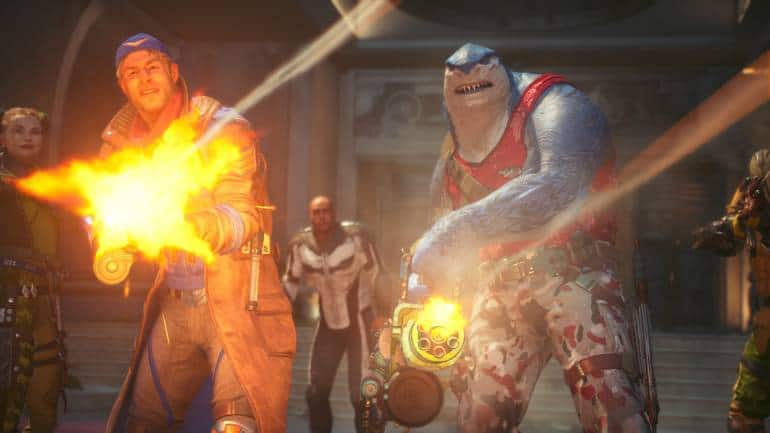 (Screengrab taken on PlayStation 5)
(Screengrab taken on PlayStation 5)
It’s a good thing then that the combat feels satisfyingly crunchy and is aided by some superb sound design. Each character is crafted to offer a different gameplay experience both in terms of combat and traversal. At points, the game incentivises players to strategically deploy specific characters for particular missions, to capitalise on them being ‘psyched up’ for those tasks. This design choice weaves a subtle narrative thread throughout the game.
In the first couple of hours, gameplay may take a bit of getting used to, but the cutscenes are entertaining and push things along. For the most part, they fall somewhere between James Gunn’s cinematic take on The Suicide Squad and some of the zanier bits from the Arkham games — which, just to be clear, is a very good thing.
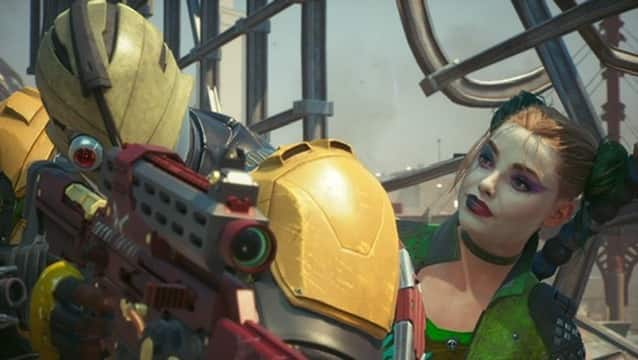 (Screengrab taken on PlayStation 5)
(Screengrab taken on PlayStation 5)
All filler, no killer
After having spent around 13 hours on the game, a handful of initial cracks widened into gaping crevasses and the few positives proved insufficient to even attempt to paper over them. Let me elaborate, and I’ll begin with the cutscenes to which I alluded above. While they remain fun enough throughout the game, unfortunately, it’s only during the cutscenes that the story moves forward. There is virtually no storytelling amidst the actual playing of the game.
And since we’re on the topic of gameplay, traversal (particularly when viewed as a combination of four distinct styles of getting from A to B) remains a delight, but there is very little variety in terms of missions. A majority of these require you to shoot up enemies using slightly different forms of attack — whether that’s using afflictions, grenades or vehicles — and around half a dozen see you escorting a slow-moving vehicle from one place to another. Thrilling stuff (!) On the plus side, there is an interesting mix of different enemy types to shoot, blow up or hack to bits.
Throw in a smattering of ‘protect the base’ and ‘attack the base’ type variations and you’ve got your lot for almost the entire game. That said, the five boss battles are well-fleshed-out spectacles, even if the grand finale smacks of sheer lazy game design.
 (Screengrab taken on PlayStation 5)
(Screengrab taken on PlayStation 5)
And then comes the big reveal: The ending is no ending at all. The story is just an excuse to kick off the endgame — something that had been foreshadowed all game long. Whether in terms of the way the story shakes out in the third act or the way lootboxes, daily challenges and microtransactions are shoved in your face at every turn, the raison d'etre for Suicide Squad: Kill the Justice League is laid bare before you.
This was never about killing the Justice League (which is handled quite clumsily anyway, particularly the Batman part), it was always about getting you to keep coming back and spending money to play the endgame. I was left extremely dissatisfied by the trite way in which the story section of the game came to a close. Further, good combat and traversal mechanics are a great thing, but they are rendered ultimately meaningless in the absence of context and a reason for engaging with them.
A lost cause… for now
Marvel’s Avengers suffered from average graphics, a half-baked story, very limited gameplay mechanics and DLC drops, about which no one really seemed to care. To even compare that long-since discontinued live-service title to another is to do the latter a major disservice, but here we are. On its part, Suicide Squad: Kill the Justice League enjoys well-made cutscenes and solid gameplay mechanics.
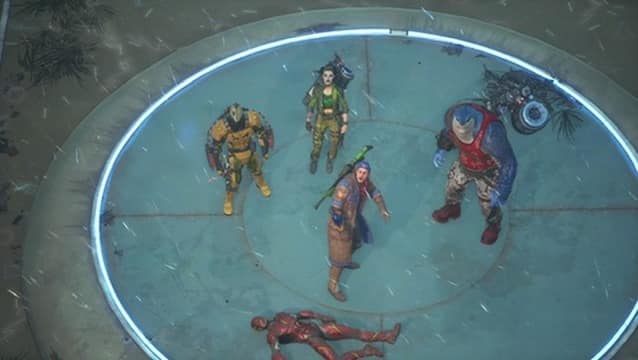 (Screengrab taken on PlayStation 5)
(Screengrab taken on PlayStation 5)
It’s a shame then that everything else about it is just very poor, cynical or both. Take for instance the city of Metropolis, which is an exciting new location after the variants of Arkham we’ve seen in the past. Sadly, there’s very little depth to any of the new sights and landmarks because you can’t interact with them. They merely serve the purpose of being part of a colorful map on which to go about shooting enemies.
And that brings me back to the premise of the entire game. One would imagine that if the goal was to play the ‘bad guys’ and kill the Justice League it would feel more significant when you do so. But it doesn’t, because first, you’re not really killing the Justice League (since they’re under Brainiac’s control) and second, this is only a setup to get you to keep coming back and killing hoards of faceless baddies.
Is there a silver lining? Yes. Aside from the fact that some zipping around and blasting in the endgame isn’t the worst way to kill a bit of time, there’s the promise of six seasons worth of content. Perhaps some story DLC, new characters and the sprinkling of new mission types could make the game worthwhile eventually.
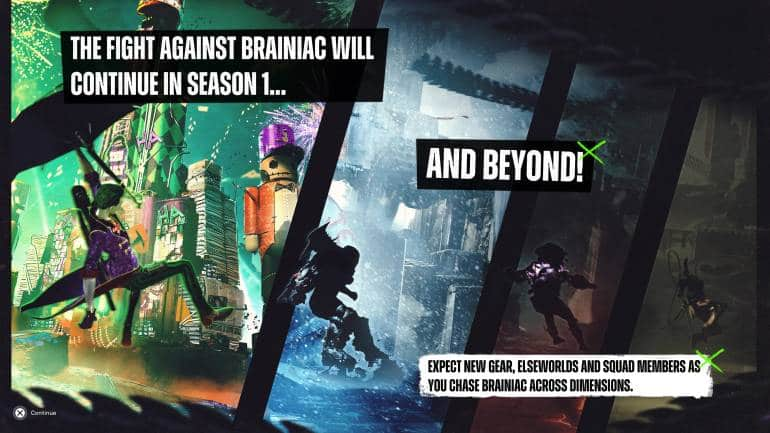 (Screengrab taken on PlayStation 5)
(Screengrab taken on PlayStation 5)
Game reviewed on PlayStation 5. Review code provided by publisher.

Discover the latest Business News, Sensex, and Nifty updates. Obtain Personal Finance insights, tax queries, and expert opinions on Moneycontrol or download the Moneycontrol App to stay updated!
Find the best of Al News in one place, specially curated for you every weekend.
Stay on top of the latest tech trends and biggest startup news.